Overcome Your Toughest People Analytics Challenges Using Visier
People analytics is the key to better business decisions, but the journey from data to insight to action needs a good guide. Find out how Visier can help.

People are the center of the business and understanding them is the key to better business decisions. Employees create products, deliver services, delight customers, and solve complex problems. People analytics means collecting and transforming HR data and organizational data into actionable insights. With better access to people data, 70% of executives say they could make better decisions, faster.
Visier People® is your end-to-end people analytics solution for building a people-powered enterprise. Unlike other people analytics tools, Visier delivers disruptive time-to-value with pre-built analytical workflows that connect all the right people and data to achieve better outcomes. Here are five ways Visier can excel at overcoming your toughest people data challenges.
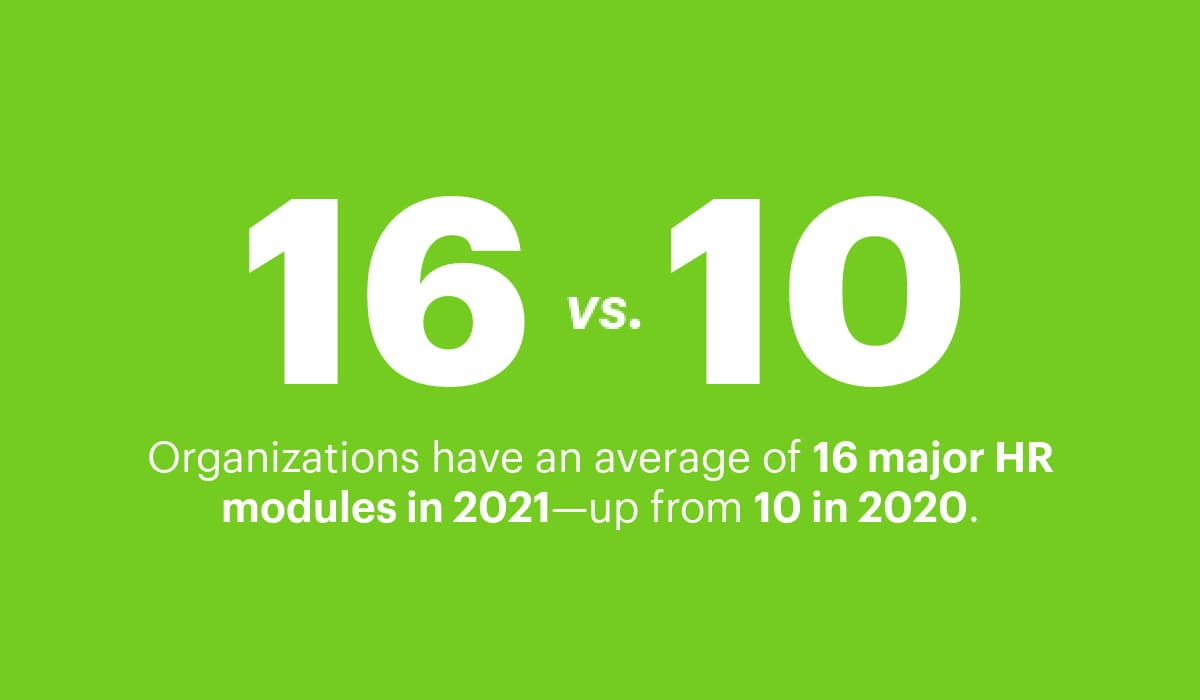
1. Consolidating and harmonizing complex people data
Formatting people data to be ready for analyses is the most time-consuming step of the people analytics process. HR data deals with a lot of moving parts, making it notoriously difficult to keep everything perfect. Errors or gaps within your workforce data such as missing personal information, typos, and other simple human errors, are known as “dirty” data. Many organizations think they can’t begin their people analytics journey until their data is clean.
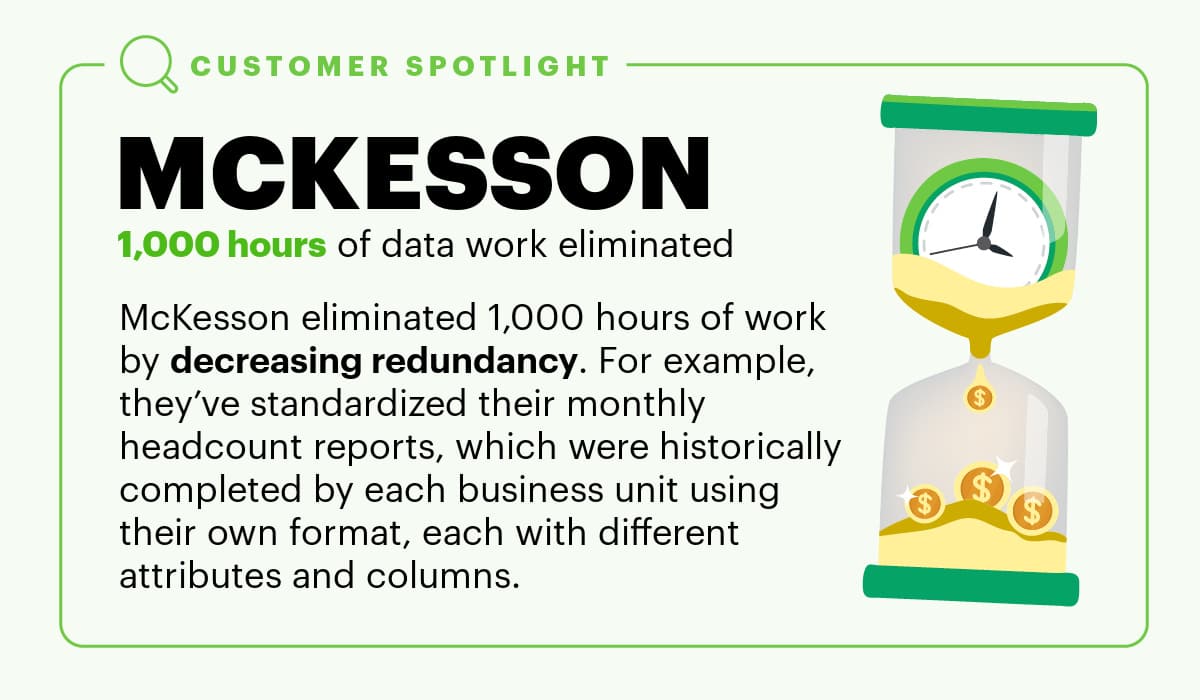
It’s next to impossible to have perfectly clean HR data. The good news is, dirty data doesn’t have to be a barrier to utilizing people analytics. You can begin using people analytics today, regardless of the quality of your data. Visier connects directly to your source systems, prepares your data for analysis, removes duplicates, fills in the missing values, and creates a time-based view of the entire employee lifecycle. For example, using Visier helped medical supply giant McKesson eliminate 1,000 hours of work needed to create monthly headcount reports. These headcounts, made with more consistent, trustworthy data, reduce the chance of confusion or misinterpretation.
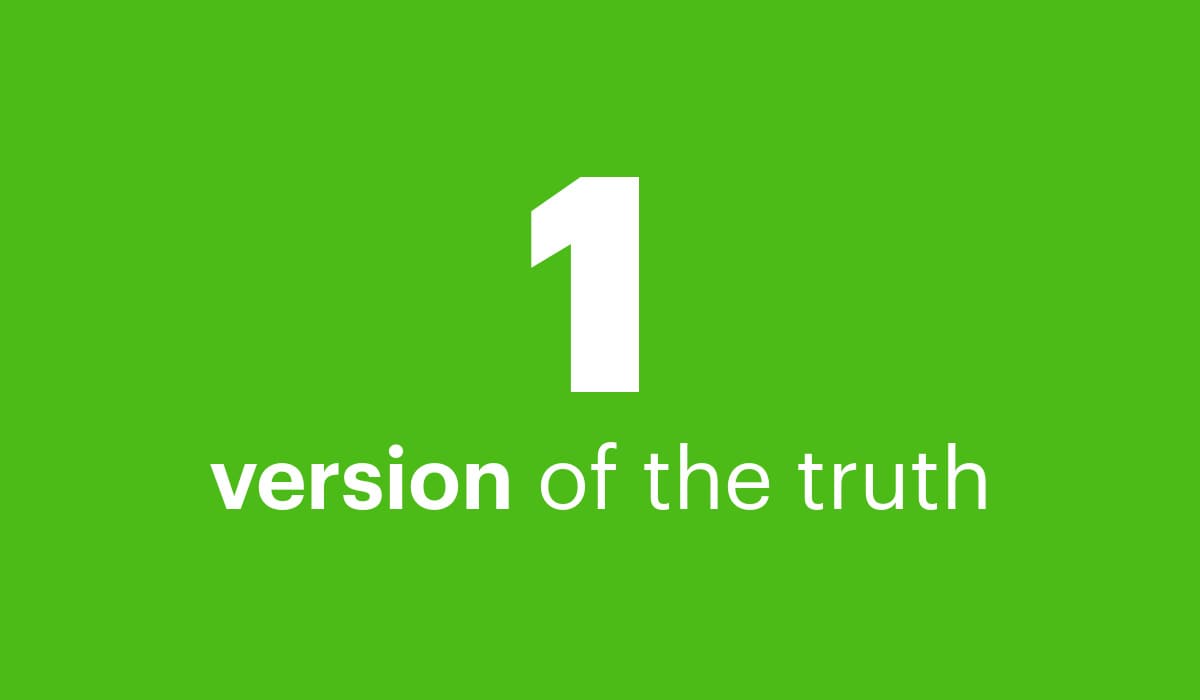
2. Standardizing the most important metrics
People data sits in many different systems. When people data isn’t uniform, it can be problematic and lead to difficulties down the line, such as having different views of the same data. There will be times when perfect accuracy is necessary in HR data, analyses, and projections. For example, your salary bands will need to be entered accurately in order to determine if you are paying diverse employees fairly compared to non-diverse employees.
Visier’s proven data model combined with standardized metrics and benchmarks guide users to the right questions—and the right context—so they make better, more responsible decisions. Visier offers high-level benchmarks every year gleaned from our deep customer base which can give you a clearer picture of how your company stands against others.
“A key early decision was to use Visier as a business tool, not just an internal HR tool. While HR needs to have it, our key stakeholders are the managers and leaders running the business. Visier enables everyone to ask and answer questions themselves using data.” — RJ Milnor, Global Head of People Analytics at Uber
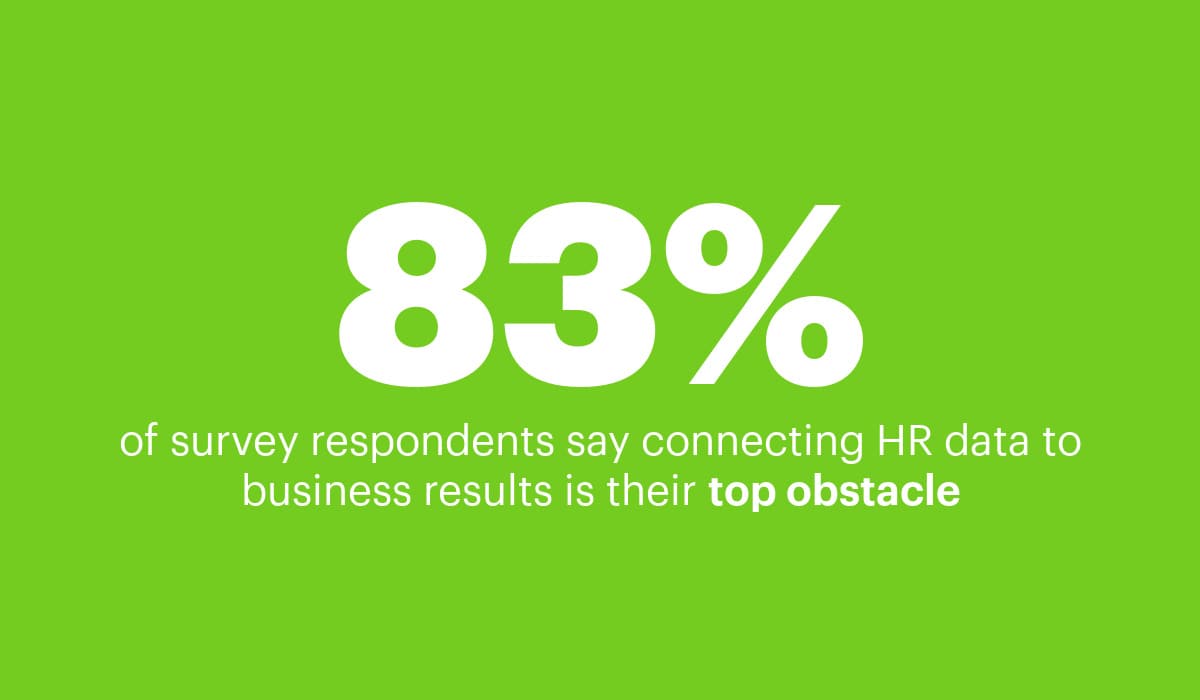
3. Building an agile, data-driven culture
Business leaders are eager to access more people data to quickly answer new questions arising every day. However, HRBPs are not always prepared to immediately answer the questions they receive. Arming managers with accurate, up-to-date, reliable data informs all leaders to make better decisions. But data democratization can be a challenge and different companies will approach the process differently based on their unique cultures, size, and data needs. Block, Inc. began its rollout first with their people team and then to their business partners. Within about a year, they were ready to expand access to the entire manager population.
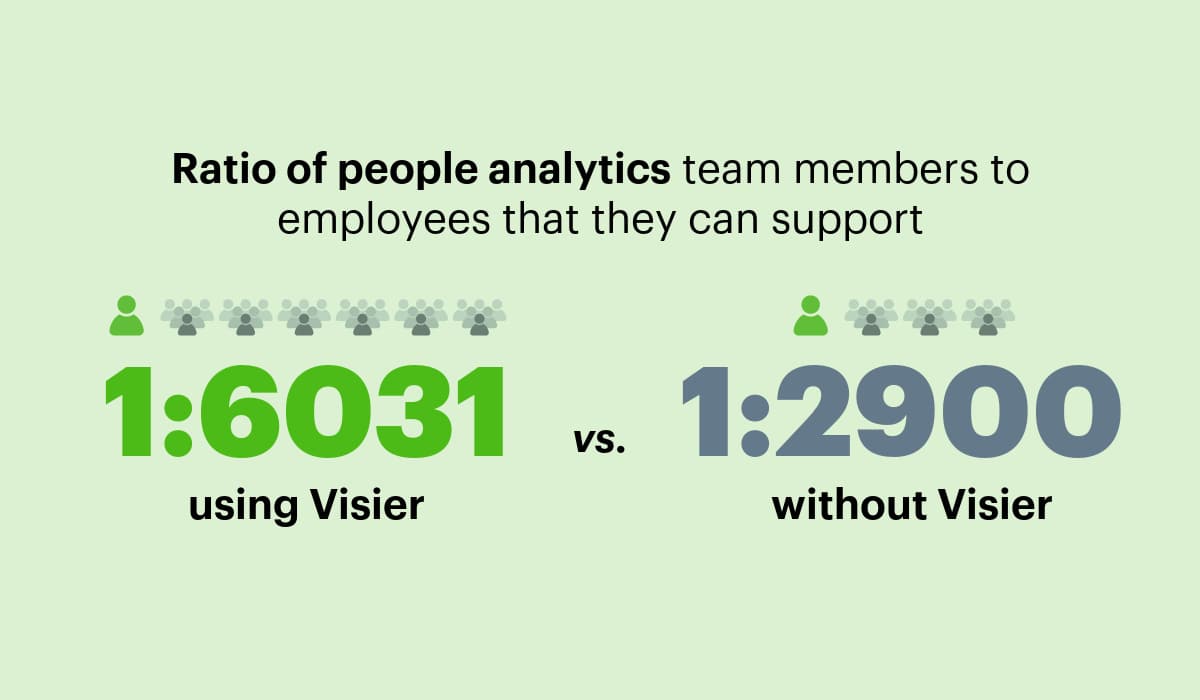
“Our approach was that we wanted it to be so intuitive that people could use Visier with, essentially, no training.” — Dr. Anna Merritt, Head of People Analytics, Block
Visier’s question-led experience makes it easy for every user to start with any question. Users can either create a custom question or choose from the pre-built question list and follow the data to the answers they need to take action.
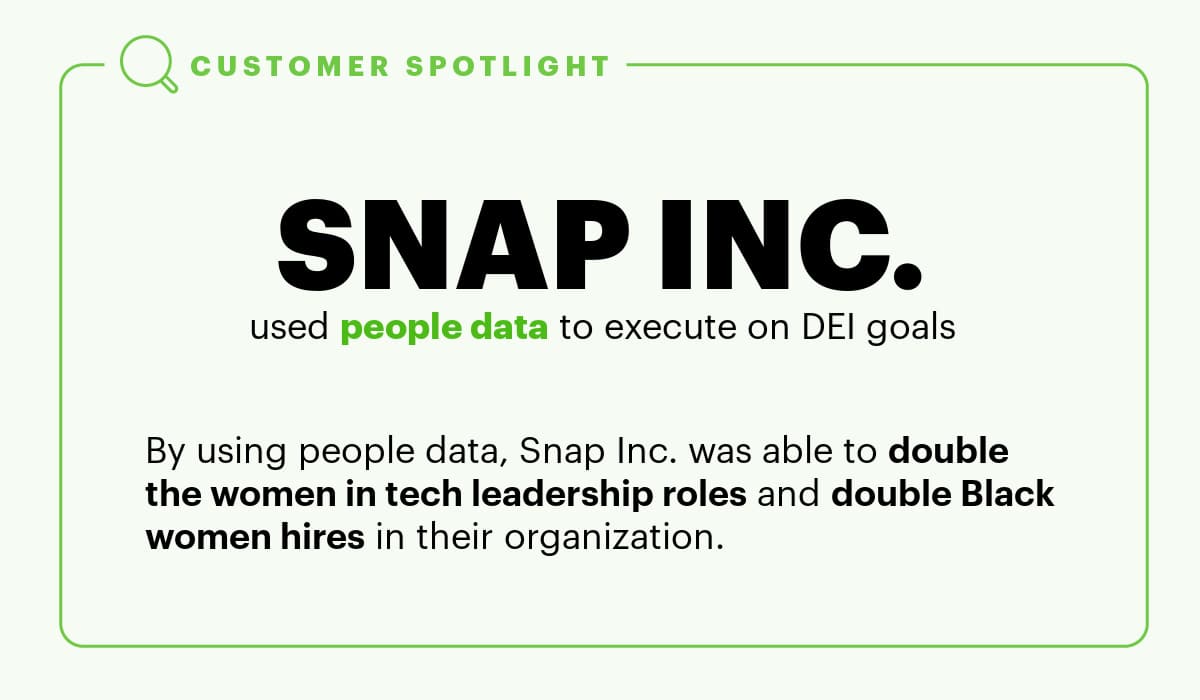
4. More value, smaller team size
Most people analytics teams are fairly small and therefore struggle to keep up with never ending requests for dashboards and reports. Visier reduces this workload. Visier customers are approximately twice as productive as organizations using other solutions, delivering as much or more value with a smaller team size. While the right people analytics platform is essential to getting data-backed answers, there’s another crucial ingredient to making good talent decisions based on data: having the right people analytics team and structure.
It’s not necessary to start with a large people analytics team. By enabling business stakeholders with self-serve people analytics for relatively straightforward requests, such as headcount, Visier frees up the people analysts to become true business advisors, drilling deeper into these cases when necessary and developing next steps.
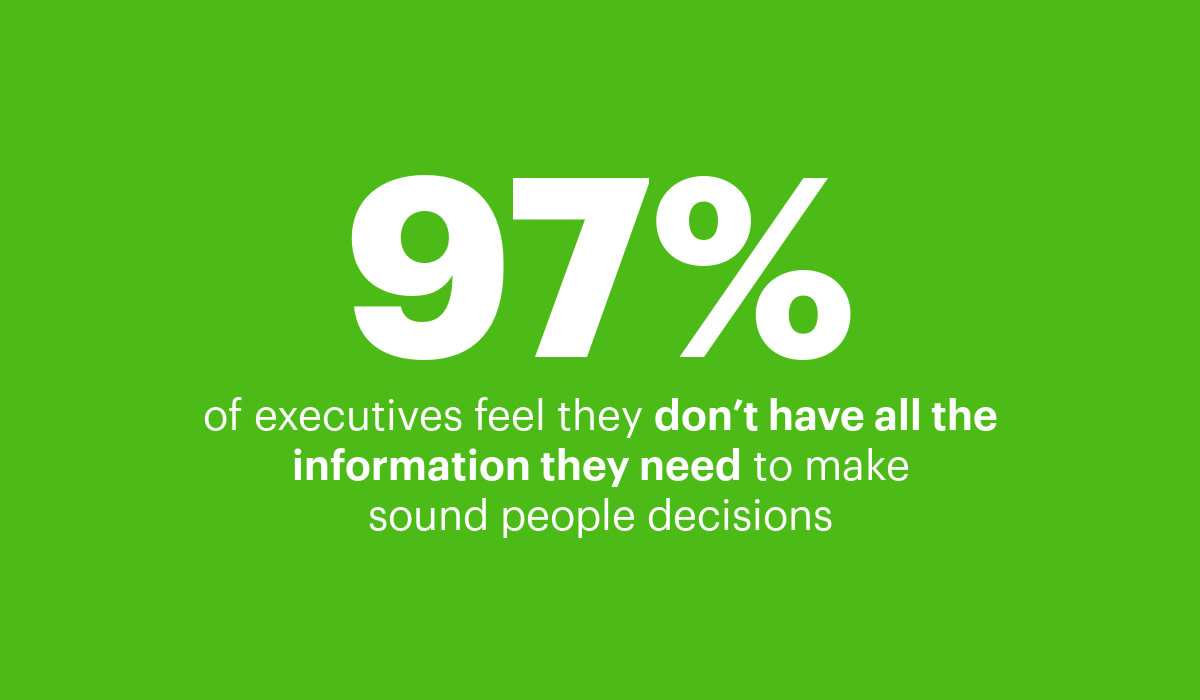
5. Delivering data-driven insights along the entire employee lifecycle
Most HR organizations have multiple systems for managing the different aspects of the employee lifecycle. Pulling and combining reports from each system can be a long, manual process. Visier enables organizations to quickly analyze data from the entire employee lifecycle in one place and improve employee recruiting, retention, productivity, engagement, and more.
Tracking the metrics at each stage of the employee life cycle will help you answer important questions:
Attract stage
Measure applicant diversity, time to fill, and quality of hire by asking these questions:
Do you have a wide enough array of applicants?
How long does it take from posting a job to onboarding?
Who are your superstars?
Onboarding stage
Find out how well the hiring process went by asking these questions about 90 day turnover, days to productivity, and network growth:
Are candidates turning over in the first 3 months?
How long does it take for new hires to become proficient?
Are new hires connecting within the organization?
Development
Estimate how well training, learning, and development resources are upskilling employees by asking these questions:
Are employees using the skills-building resources?
Which employees have the skills for promotion?
Are there diversity issues in training participation?
Rewards and recognition
Rewards and recognition (R&R) includes compensation, benefits, and other incentives to keep employees motivated to perform and stay engaged. Ask these questions to find out if your R&R programs are working:
Is the pay equitable?
Are pay raises keeping up with inflation?
Is salary compression an issue?
Retention
Employee departures have a steep financial impact on the company, making retention, turnover, attrition, and retirement metrics important. Ask these questions to track the metrics that affect retention:
How are employees responding to engagement surveys?
What is the rate of resignation and is it increasing?
How often do employees get promoted and to which roles?
Offboarding
The final stage of the employee lifecycle also matters. Tracking metrics at this stage will give you valuable insight that can impact those still with the company. Ask these questions:
What are the stated exit reasons?
Does salary compression make employees leave for better pay?
How often do former employees get rehired?
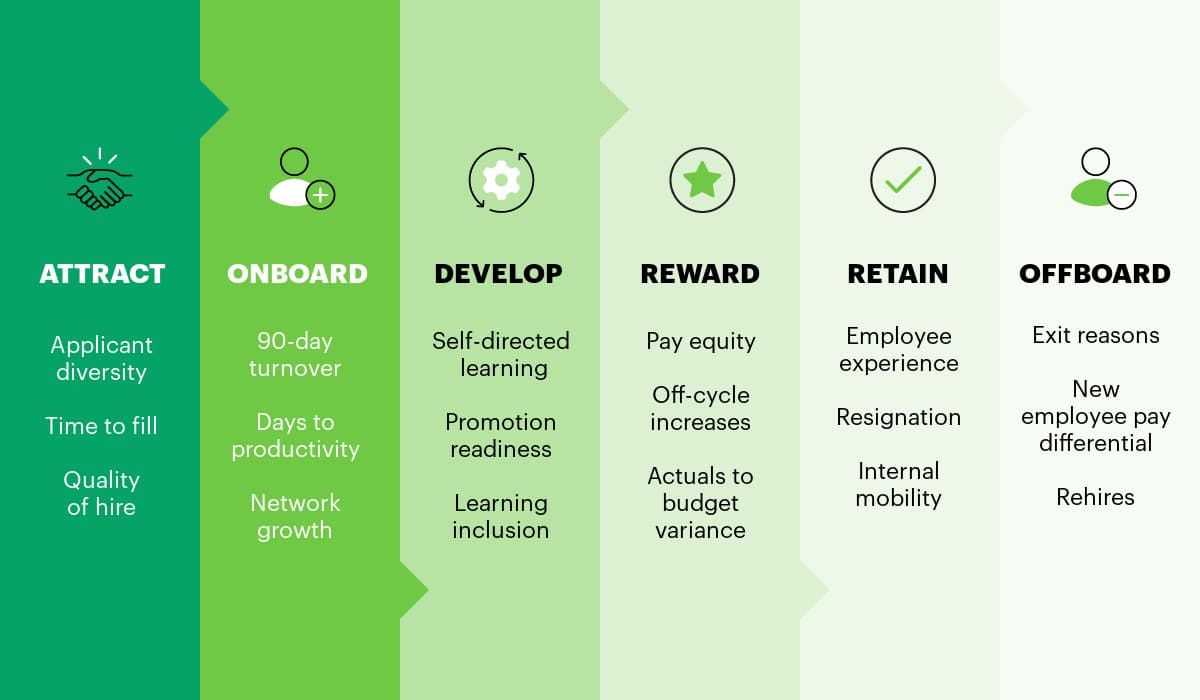
No matter what industry, your organization can benefit from analytics to better understand its people. People analytics is the key to better business decisions, but the journey from data to insight to action needs a good guide. Find out how Visier can help. Request a demo today.
Get Outsmart content straight to your inbox
Subscribe to the People Insights Monthly newsletter for actionable insights and stories.
Subscribe now